Summer 2015 - France: Paris and the Loire Valley
![]()
As the train sped through the Dutch, Belgian and French countryside, we began thinking about Paris: Notre Dame, the Tuilleries Gardens, the river Seine crossed by many bridges, Haussmann's streetscapes, sidewalk cafes, French wine...
Arriving at Paris' Gare Nord, we were looking forward to be welcomed by the friendly folks at the Marignan, our favorite hotel. It is a small very comfortable place on the Left Bank near the Sorbonne and the Pantheon. It is the area where Hemingway and James Joyce once lived and abounds in wonderful cafes where you can almost expect to find them discussing the events of the day. We stayed here three years ago and enjoyed the area, so it was the obvious choice for our return.
For a week, we explored this great city, viewing the iconic sights like Notre Dame Cathedral, the Eiffel Tower and Luxumbourg Gardens, but also visited the Centre Pompidou we had missed before, walked through arrondissements we had not yet explored, and over glasses of French wine, at wonderful cafes, considered whether we would enjoy a longer stay in Paris. Time will tell.
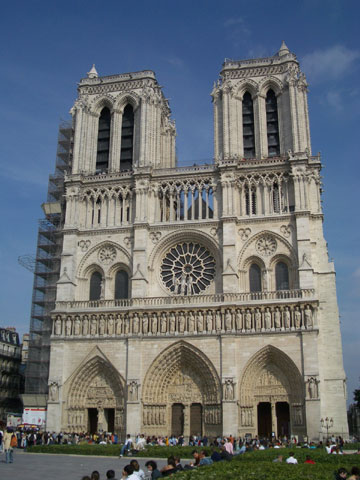
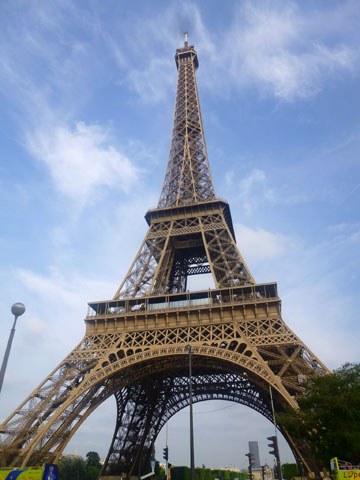
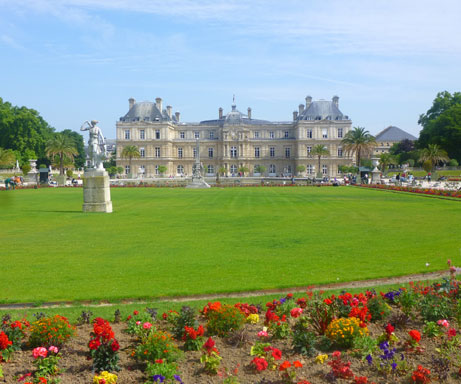
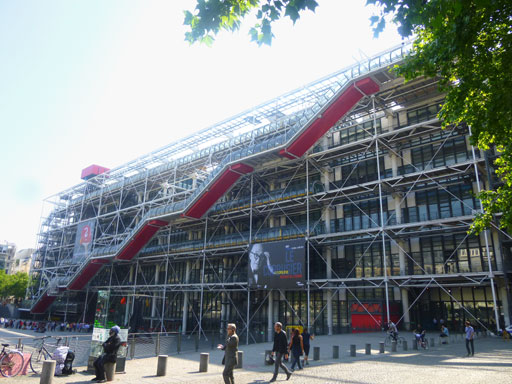
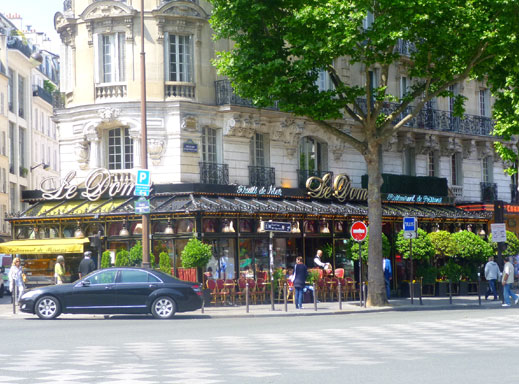
We then headed to the town of Vannes on the Bay of Morbihan in Brittany. Our first field trip was to Carnac, the 'Stonehenge like' field of megalithic standing stones. We took a public bus through the countryside, stopping at several villages along the way and enjoying views of corn and grain fields and pastures of cows and sheep. Arriving in Carnac, a charming village, we walked a couple of kilometers to Menec, one of the three fields of alignments where 1050 grey and lichen covered stones stand in rows. These stones vary in size from perhaps a meter high to over two meters and some are quite broad as well. The rows run from east to west and at the western end of the field is an "enclosure", a large circle of very large stones standing close together.
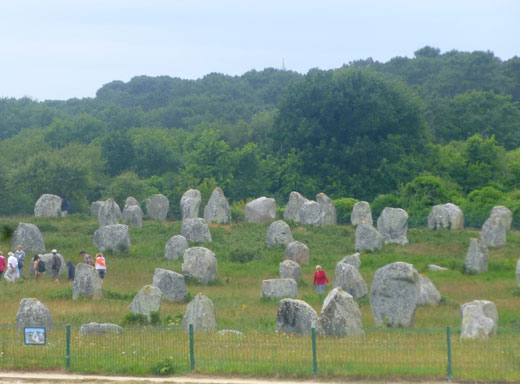
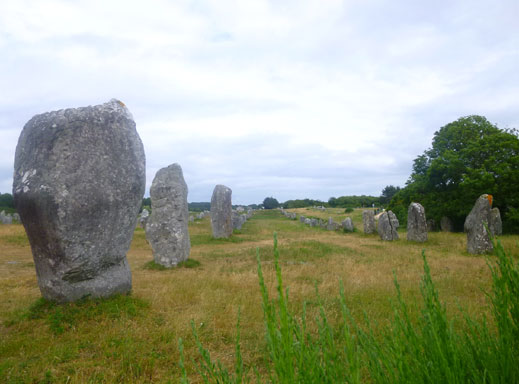
We felt that we were in the presence of ghosts of people who felt compelled to move these megaliths from where ever they were into specific positions in this field. Where did the stones came from? How were they moved? How were they placed upright here? And why?
Leaving these questions unanswered, we traveled to Blois, a city in the heart of chateau country in the Loire River valley. The Blois Chateau, perched on a cliff above the river, offered an introduction to the 'chateau culture' that, from the 13th century until the Revolution, occupied an essential chapter in French history.
From the Place Victor Hugo, the facade of red brick and grey stone, with an equestrian statue of King Louis XII above the entry invited visitors inside. The monumental spiral staircase and royal rooms of the Francois I wing, influenced by the architecture of the Italian renaissance offered a view into the lives of the Kings and Queens of France. The rich interiors with plenty of gilt and glitz as well as portraits of the royal owners provided stories from the turbulent times when France was torn by the Wars of Religion between Catholics and Protestants. King Henri III lived here and even had his arch rival Henri I, Duc d'Guise assassinated here. Clearly "chateau culture" had its violent side!
Click here to view our Flickr album.
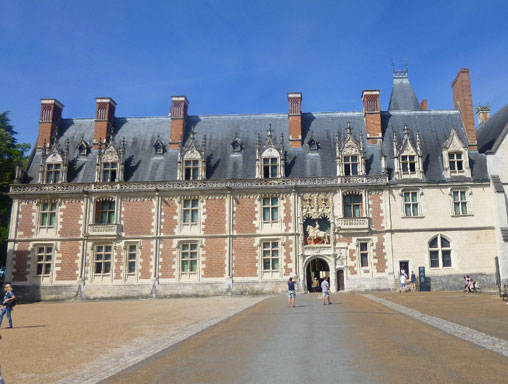
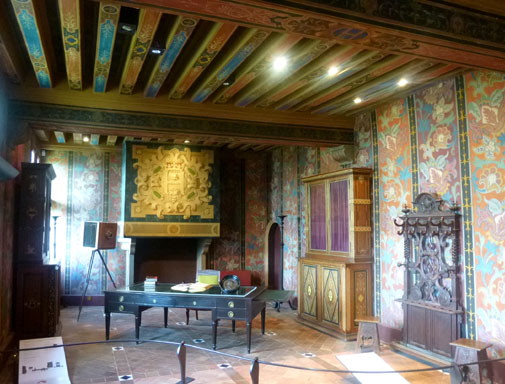
Nearby Chambord, the 'modest' hunting lodge of Francois I, is the largest and most dramatic of the chateaux. The young king intended to create an architectural masterpiece and he succeeded beyond expectations! He proudly entertained his rival, King Carlos V here but did not really live here. Instead, he and a mammoth array of servants, retainers and royal guests arrived to party and hunt, then packed up and headed to the next chateau.
Click here to view our Flickr album.
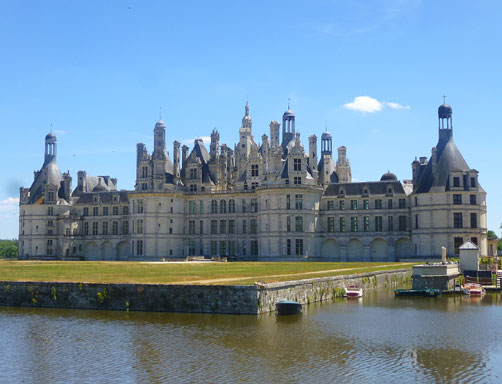
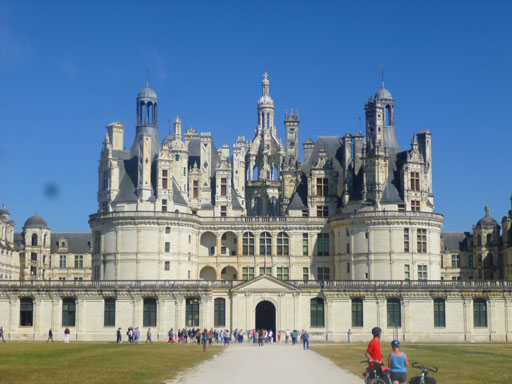
Rather cozy Beauregard chateau offered us further glimpses into this way of living that only the wealthy and powerful could experience, along with a gallery of over 300 portraits of important historic figures.
Click here to view our Flickr album
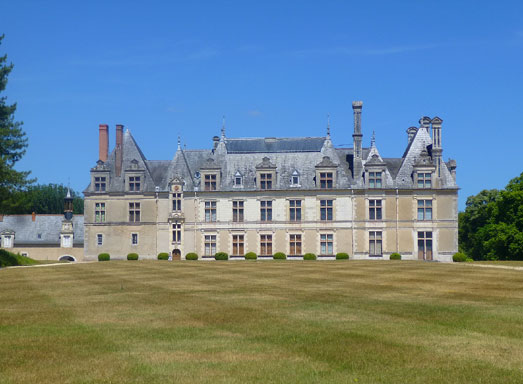
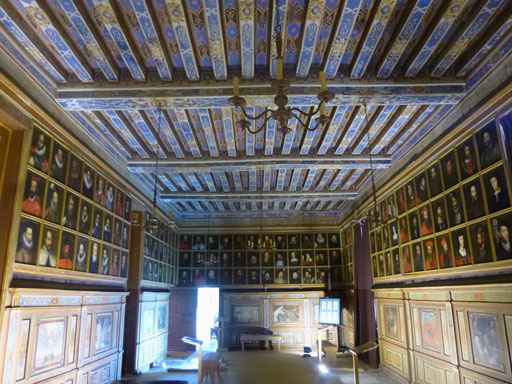
To further our growing knowledge of chateau culture, we also made visits to Chenonceau and Cheverney, each a special and unique place with it's own story. By the end of our stay, we began to feel that the inhabitants of these great houses were people we had known once upon a time!
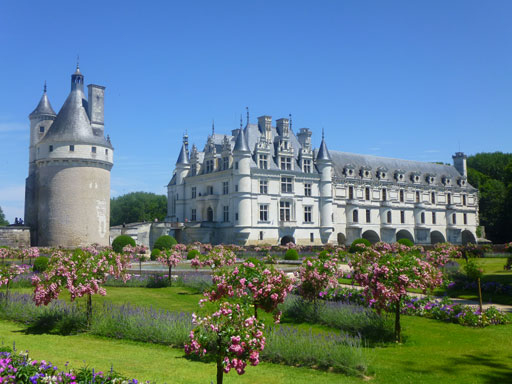
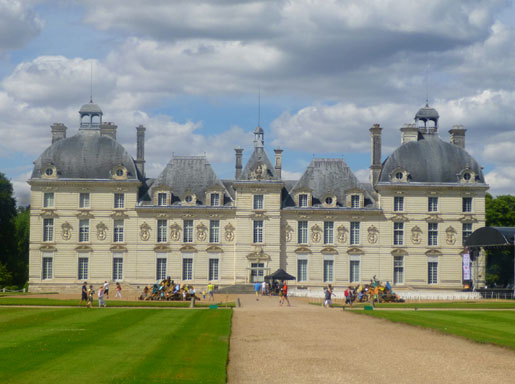
Click on the following links to view our Flickr albums of: Chenenceau Cheverney
On to Saumur, where we stayed in a small hotel in a room with a panoramic view of the river. This is the heart of wine country, especially sparkling wine. From here, we traveled to Fontevraud Abbey, founded in 1100, the resting place of King Henry II of England, Eleanor of Aquitaine, King Richard I Lion Hearted, and Isabella, King John's queen. We paid our respects and wandered through the vast church, chapter house, cloisters, and kitchen. We were a bit disappointed that the structures have been much rebuilt but also pleased that these great buildings are still standing and still used for cultural events and exhibitions.
Click here to read our story about Fontevraud Abbey
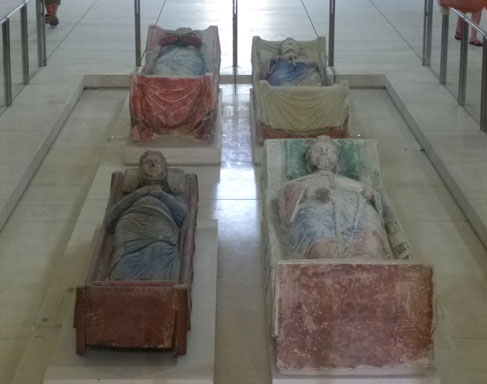
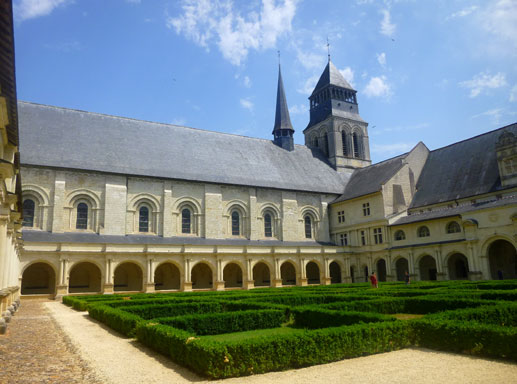
On a day trip, we traveled to Angers to visit their wonderful chateau/fortress and experience the amazing Apocalypse Tapestries that visualize the story written by Saint John that we know as the Book of Revelations. Woven in the 14th century, this series of large tapestries has been wonderfully preserved, the colors are bright, and an audio guide provides the commentary as one views them. It is high drama!
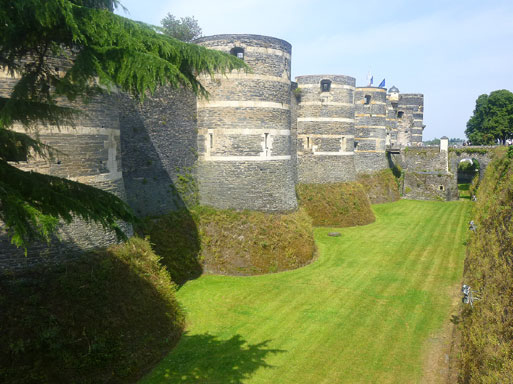
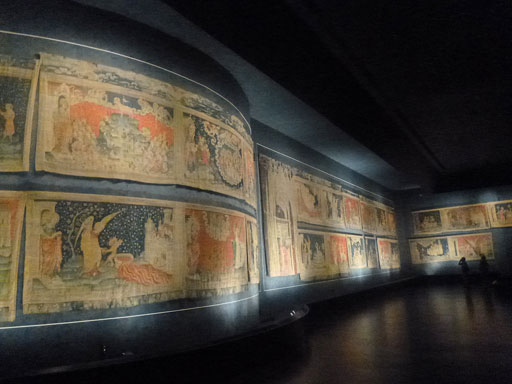
Our last city in France was Nantes, nearly at the mouth of the Loire, a large city with a chateau in the centre and a lively urban scene. We explored the city and the chateau, and at the Les Machines de I'ile, watched the elephant, an ingenious mechanical beast of gigantic proportions, taking ponderous steps, spraying visitors with water, and trumpeting loudly.
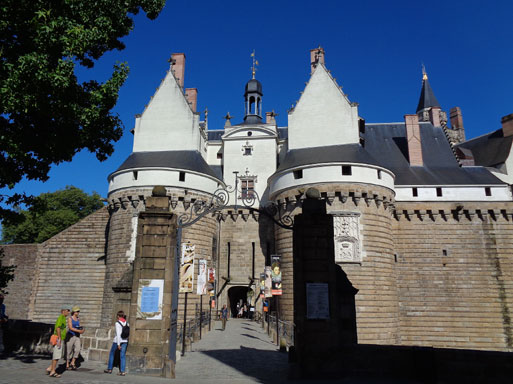
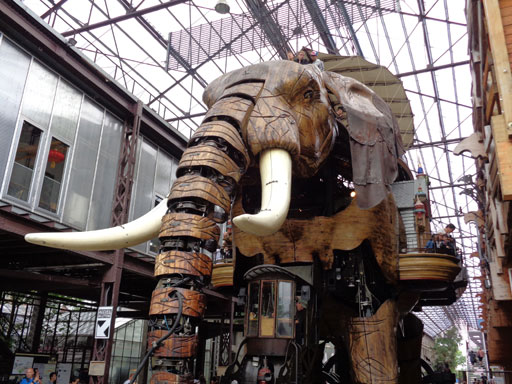
Now, reaching our 90 day stay limit in the Schengen countries, we escaped to England.
Click here to read about our travels and visits to wonderful cathedrals.
Click here to return to our 'First Stop Nijmegen, Then on to France and England' page
Click here to return to our 'Searching the World for People Friendly Cities' page
![]()